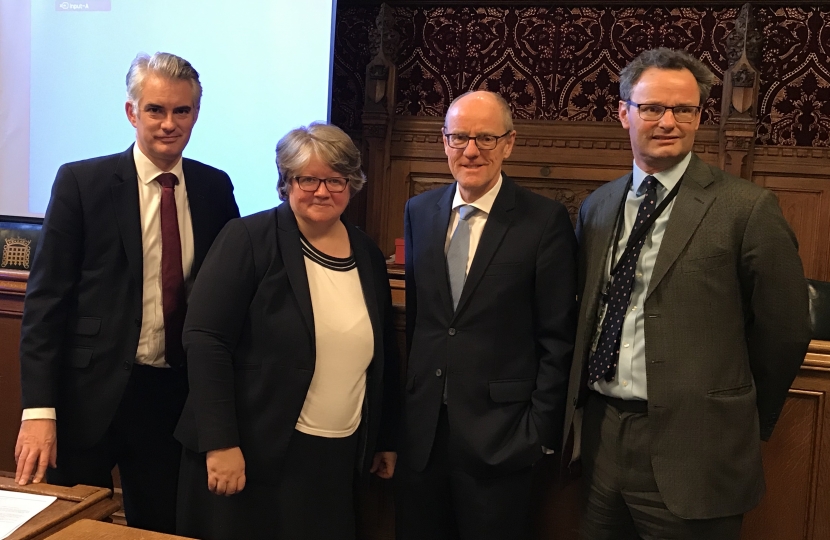
Following a meeting with the Schools Minister, Nick Gibb MP, Therese signed a joint letter with five other Suffolk MPs on the consultation on national government guidance regarding home to school transport. In particular, they are concerned about the impact on siblings and how distance to the nearest school is measured. There is significant disruption to family life if parents have to manage different school transport schedules:
Letter to the consultation:
Dear Sir/Madam,
I write in conjunction with Suffolk Parliamentary colleagues in response to your ‘Home to School Transport: Statutory Guidance’ consultation.
At present Suffolk County Council (SCC) is reviewing its school transport policy, after the entitlement to free school transport was restricted to a single ‘nearest’ school (or one measured to be nearest by the current method of calculating such a judgement). The reason for SCC’s review is that implementation of the new policy has been challenging, arguably having a detrimental impact on certain families in our constituencies with school age children. As MPs, a key factor in bringing this matter to our attention has been through specific constituency cases where parents have found themselves losing school transport in circumstances where they would not have reasonably expected to. There have been two particular issues with the SCC policy which we believe should be addressed in revised statutory guidance: the treatment of siblings, and the method of measuring distance for home to school transport.
- Treatment of Siblings
We have seen a number of cases where the new SCC policy has separated siblings, depending on their age. The policy forces younger siblings to attend a school other than the one their elder siblings do, should the younger sibling wish to receive free home to school transport, or to pay £750 for a seat on the bus their siblings already use and would not be paying for. This is the case even if there is space on the existing bus. It is understood that the £750 fee would rise significantly in future years. We believe that the separation of siblings at school in this way should be regarded as far as possible as an undesirable outcome, which we have seen cause significant anxiety to the children and wider family members affected. We would therefore request that statutory guidance requires the Local Education Authority to have due consideration to the impact on siblings, and that this consideration should be pursued with the aim of avoiding separating siblings so that they are taught at different schools for reasons not of the choosing of the pupils or their parents. We note that this would bring national guideline on home to school transport in relation to siblings into line with both national and local guidance on treatment of siblings in admission policy which favours siblings attending the same school. Additionally, we are concerned about the significant disruption to family working life if parents have to manage different school transport schedules.
- Measurement of distance
We are concerned that the current method of measuring distance for home to school transport entitlement is arbitrary and likely to lead to perverse rulings where school transport is restricted to a single ‘nearest’ school (as defined by the said method). We have had notable constituency cases where the constituent concerned was being forced to accept a place for their child at a school they did not want their child to attend, or to pay the fees as above, because of a measurement of ‘nearest’ that was arguably contrary to practical route knowledge. The draft guidelines state:
“When a local authority assesses whether the distance between a child’s home and their school is further than the statutory walking distance, the route they measure must be the shortest route along which a child, accompanied as necessary, may walk safely. This is not necessarily the shortest distance by road. The route may also include footpaths, bridleways, other pathways and alternative entrances to the school”.
We understand that once the ‘nearest’ school is measured as above the statutory walking distance, the guidance continues to refer to walking distance, even though the assumption is that in this case a bus would be used. However, we are concerned that this has led to judgements regarding the ‘nearest’ school which seems ungrounded in the reality of individual cases. For example, in one case a family was judged to be ‘nearest’ to a school not of their choosing, because it was ‘closest by walking’, even though the two candidates for nearest school were at the very least over 6 miles away. There is no question a bus would have been required, and that by bus their preferred school was unquestionably closer, giving the sense of an unfair decision based on an arbitrary measurement policy. We note that in cases of “extended rights”, the guidelines currently state that:
“whether a child lives more than 2 miles from a school, the route should be measured in the way described in paragraph 41 above. But, when assessing whether a child lives within 6 to 15 miles from their school, the local authority should measure road routes only”.
We would like the guidelines to be amended to be consistent across both extended rights and standard cases, so that for distances beyond statutory walking guidance the local authority should measure road routes only.
We thank you for your consideration.
Yours sincerely,
James Cartlidge MP, South Suffolk
Rt Hon. Matt Hancock MP, West Suffolk
Rt Hon. Therese Coffey MP, Suffolk Coastal
Jo Churchill MP, Bury St Edmunds
Peter Aldous MP, Waveney
Dan Poulter MP, Central Suffolk and North Ipswich
